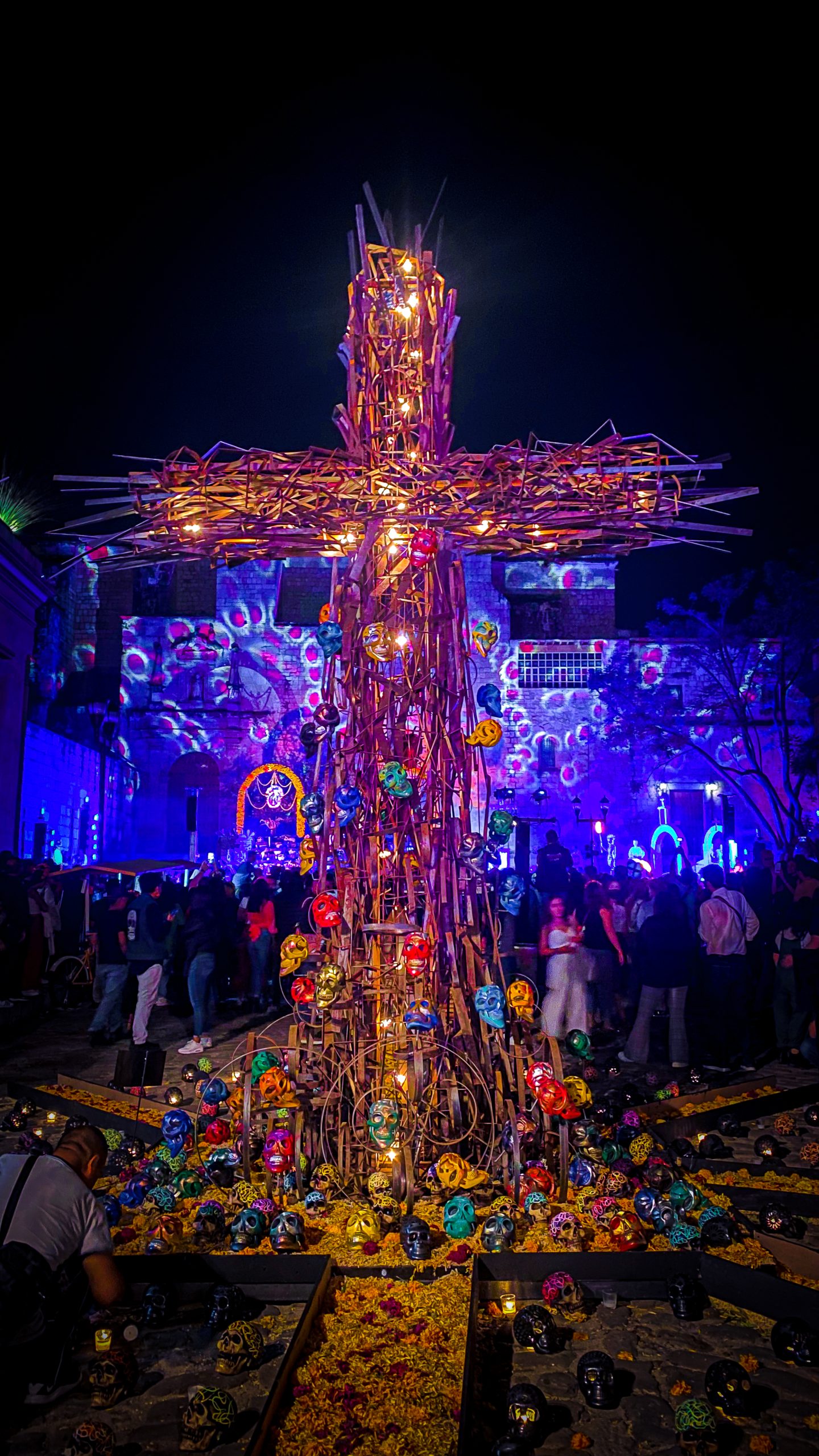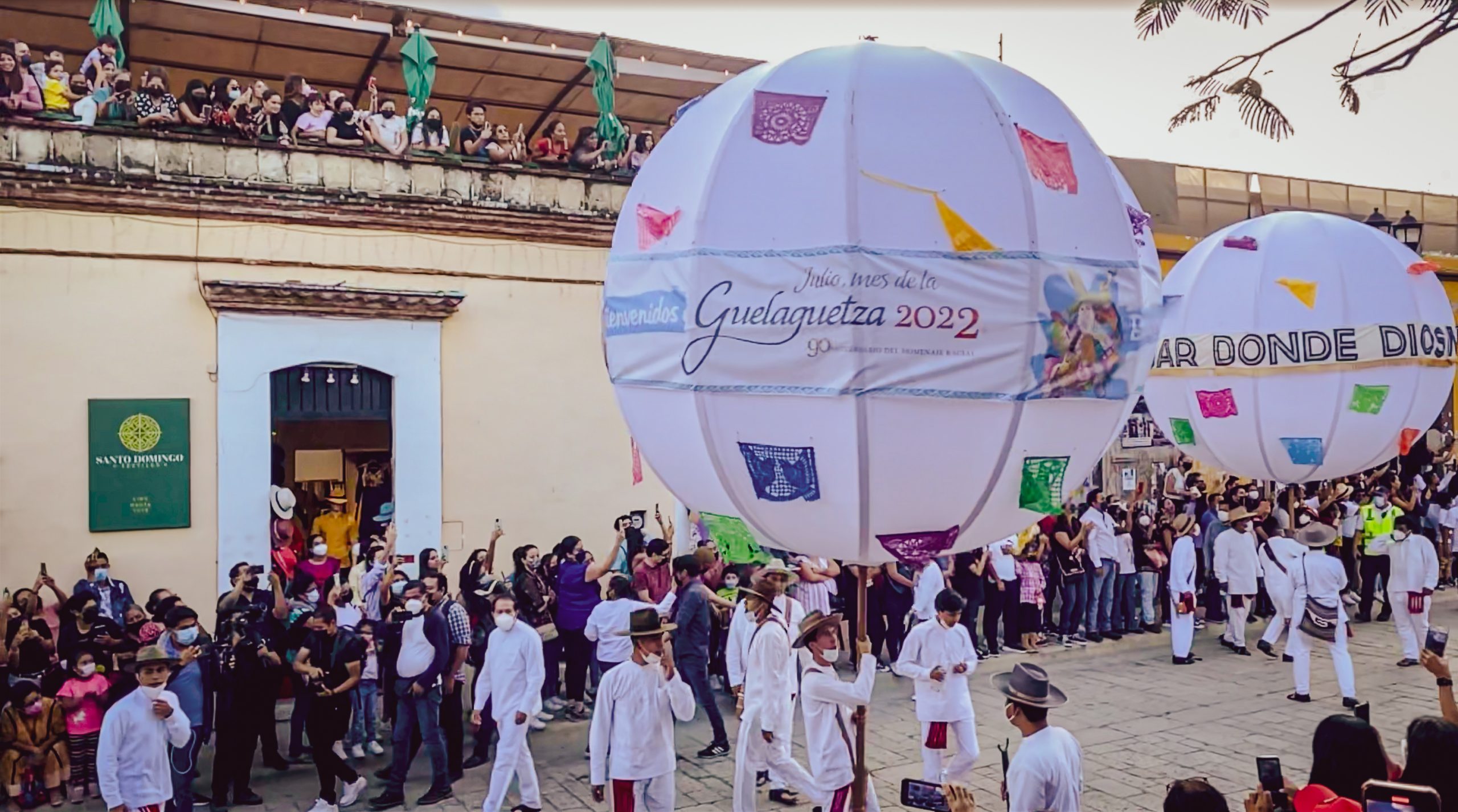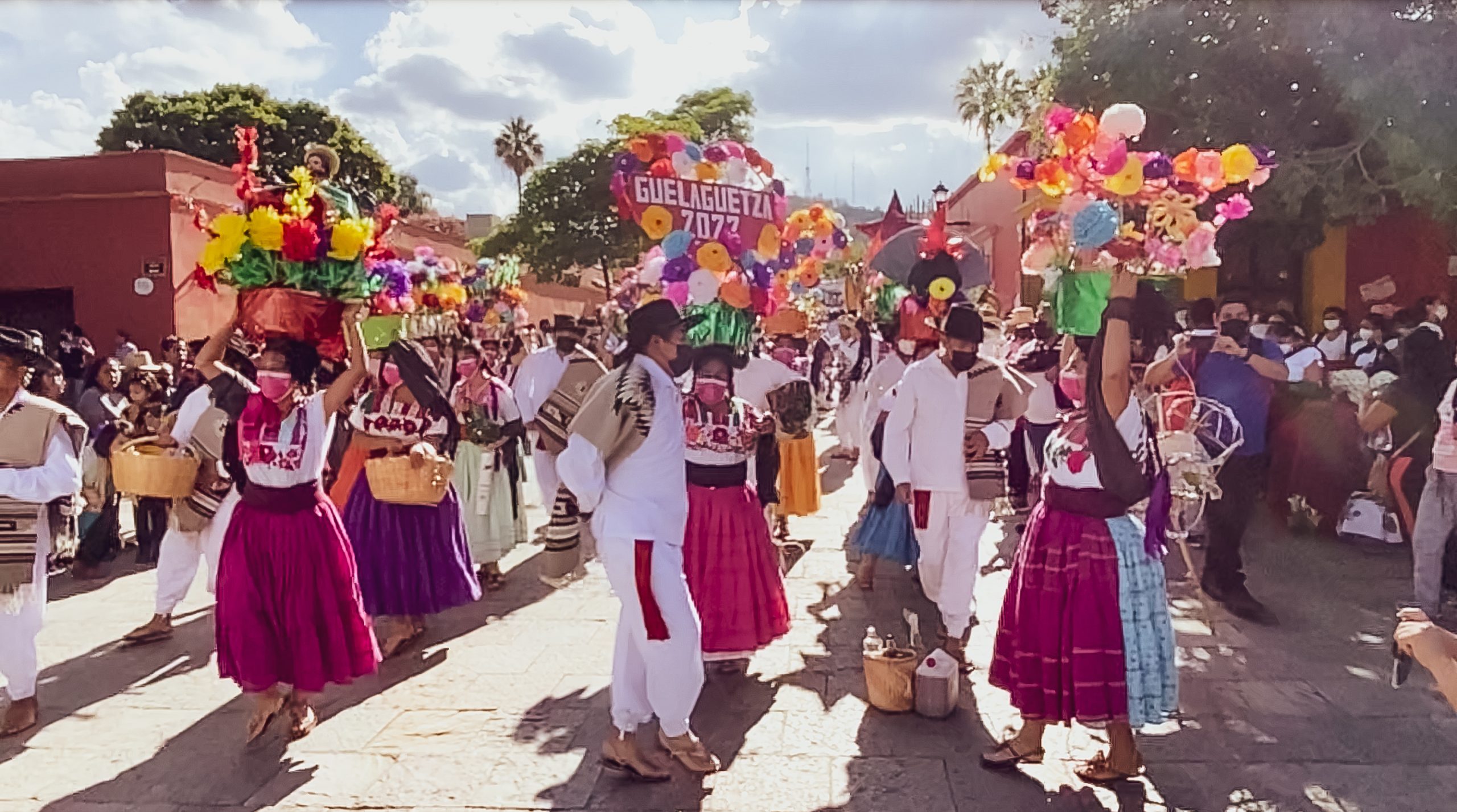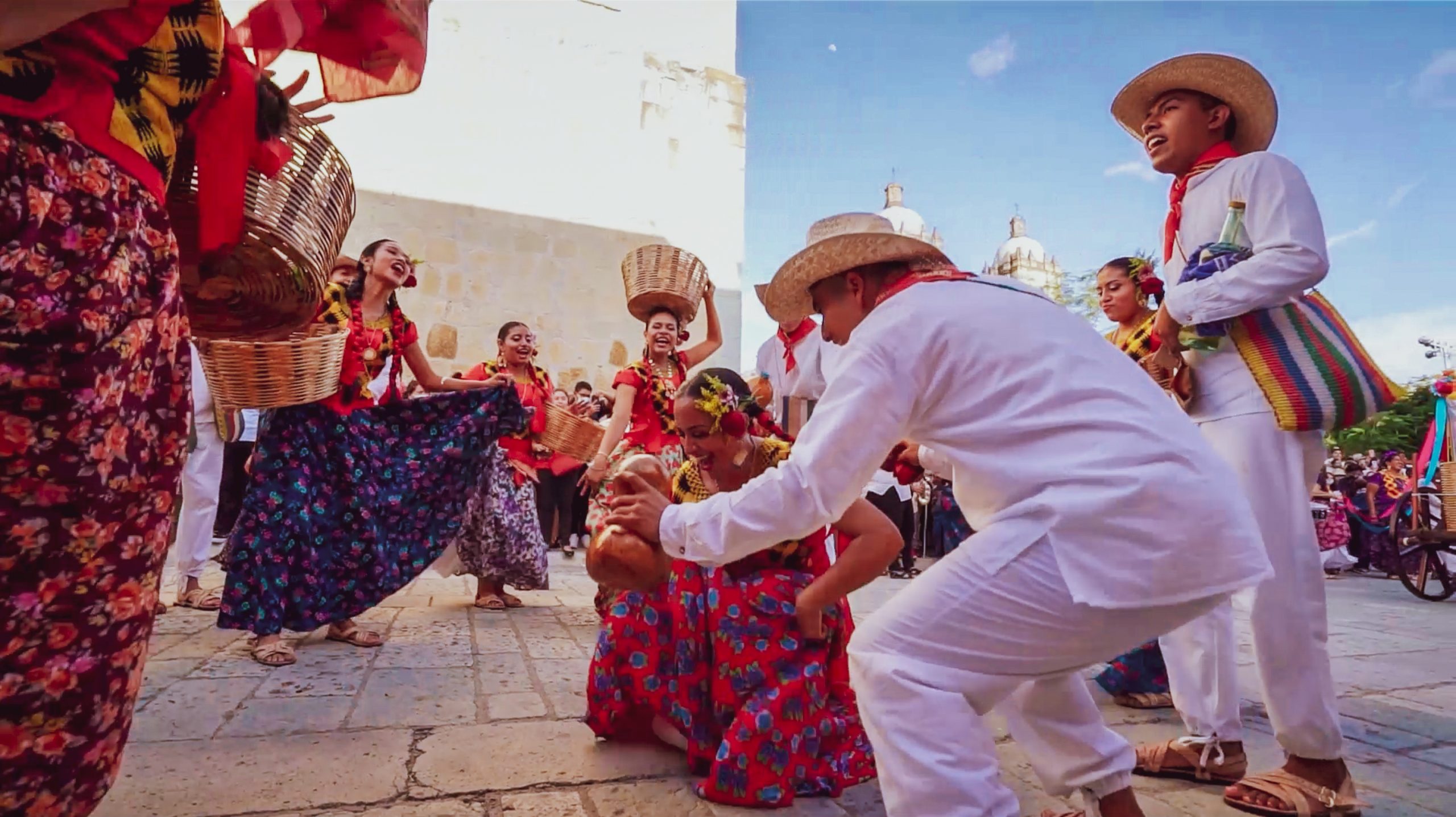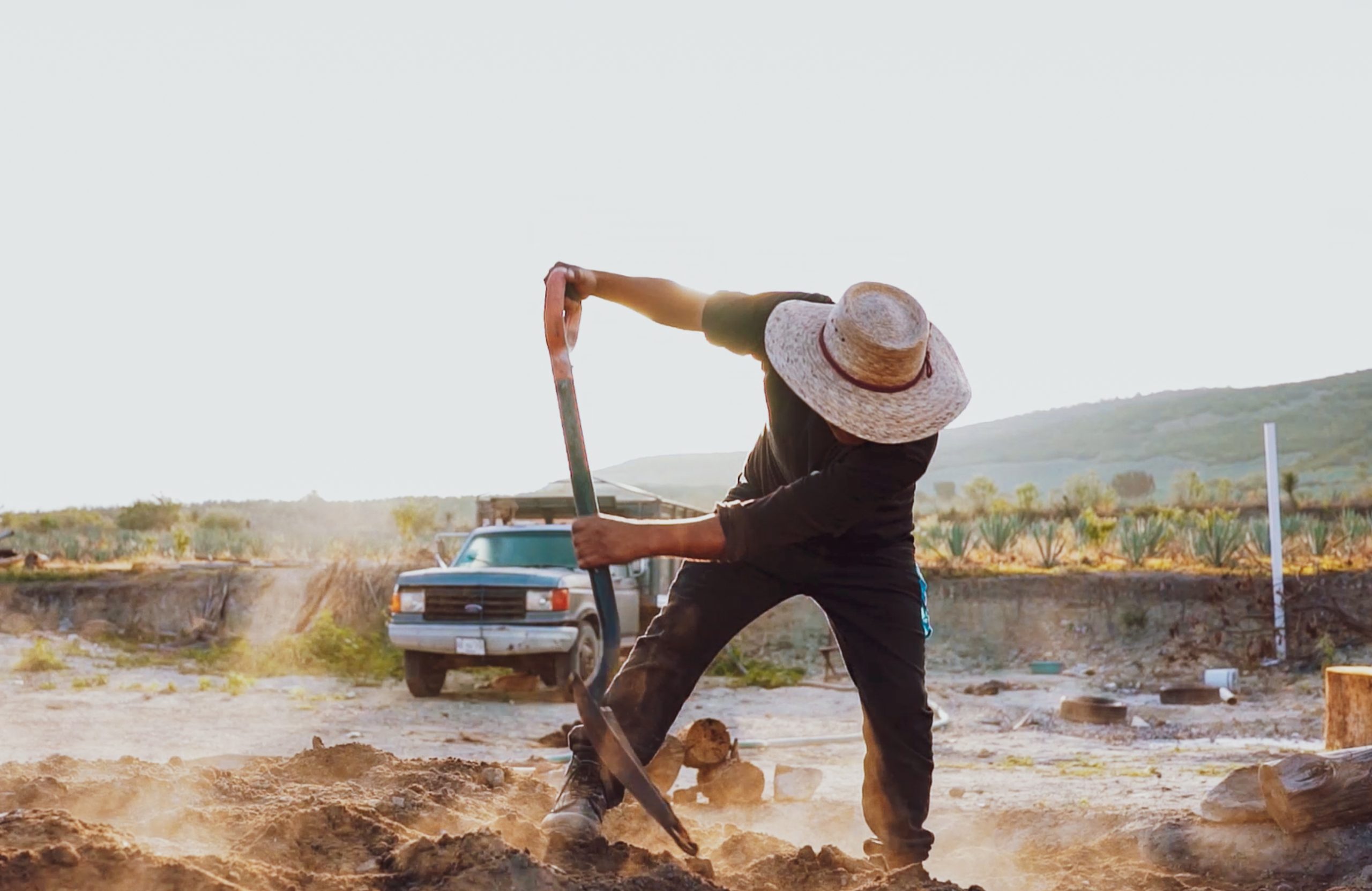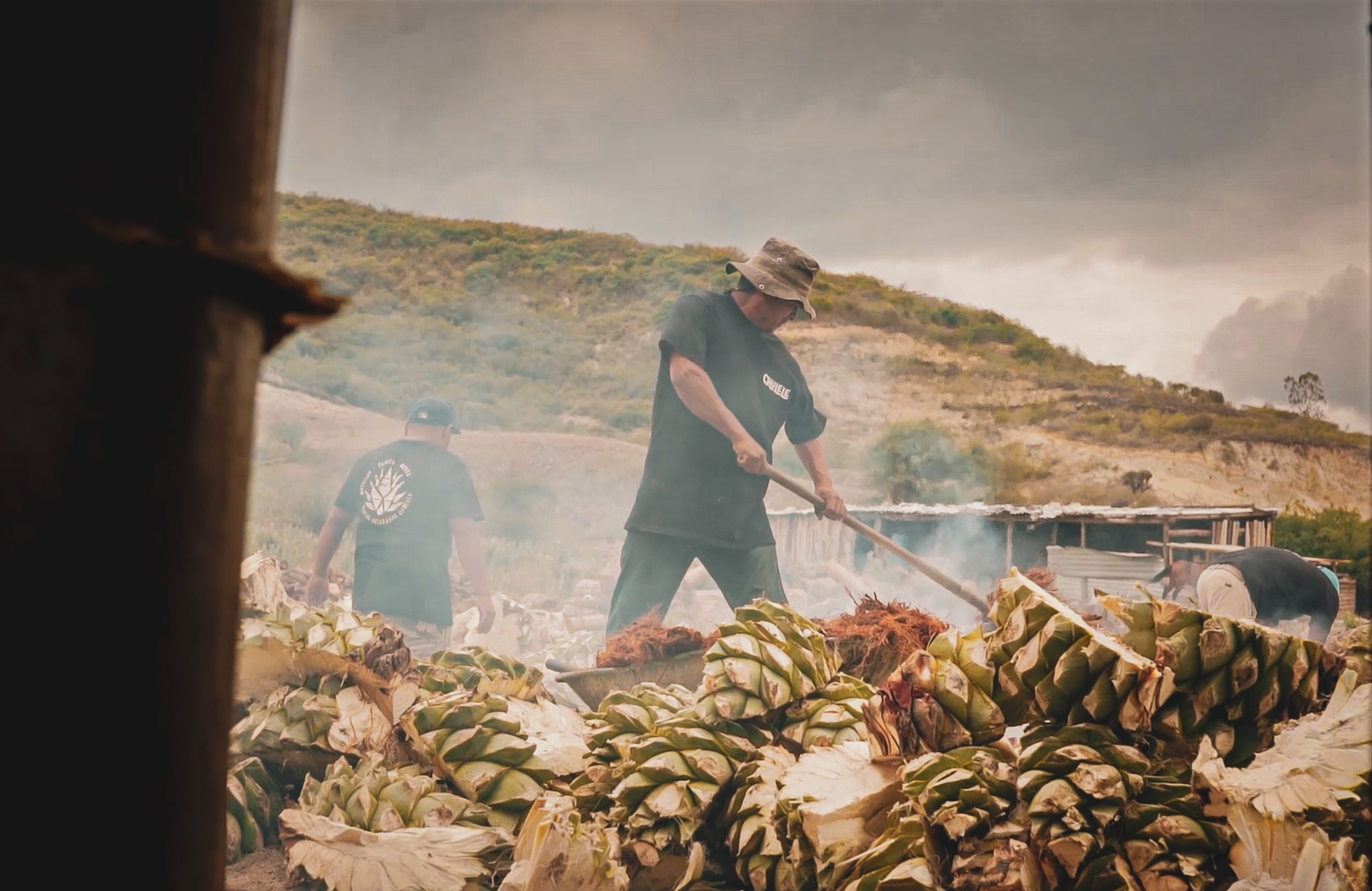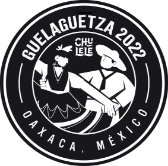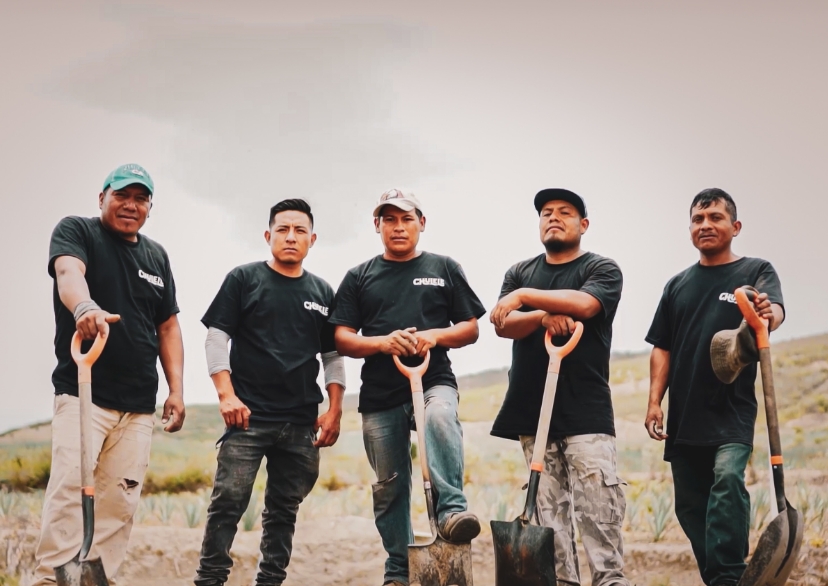The process started in Santiago Matatlân on July 11, 2022, with the harvest of the Espadín maguey. The agave for this batch was cut in the fields owned by Maestro Mezcalero Tomás Mendéz Hernandez (coordinates 16.8997546, -96.3923062) and located 10 minutes from the family Palenque. The workers started early to beat the sun’s heat as it got to 86F during the height of the day. Wearing long-sleeved jackets, not to protect them from the 63F morning cold, but to protect them from the acidic juices of the agave plant. The work to cut the spines and release the agave hearts from their solid roots is done by hand. Using the tools and methods practised for generations, the men put all of their energy and effort into finding mature plants for harvest. The agave used to produce the Guelaguetza 2022 batch had been nurtured for this moment; after 8 years, they contained sufficient stored sugar to make this special mezcal. Read more
Under the setting full moon on July 13th, the Maestro Mezcalero prepared the oven for cooking. Due to the cold nights that dropped to as low as 54F, Maestro Mezcalero Tomás extended the maguey’s cooking time to six days, which was longer than usual.On the morning of July 18th, with the cooking done, the soil was removed, and the oven opened, revealing the steaming piñas, cooked to a beautiful caramel brown. The sweet smell of the magueys rose into the air, giving a small hint of what this special batch of mezcal would become.
The cooked maguey rested for one day to cool. Once cooled, Israel Morales chopped it, loaded it by shovel and moved it by wheelbarrow to the Tahona. The traditional stone milling wheel where the horse-turned wheel crushed the agave. The process turned the cooked agave into a paste infused with the agave fibres. This mash was transferred to the open-air pine wood vats and combined to begin fermentation.
During fermentation, the mezcal gets most of its flavor directly from the Palenque’s natural environment. Fermentation is kick-started by the Maestro Mescalaro, adding fresh water and a bucket of fermented mezcal from a previous batch. Then nature takes over, as the fermentation is further fueled by the introduction of wild yeasts from many sources, such as, from the warm breezes blowing across the mash, from the grooves of the fermentation vat’s wood, and from the surface of the espadín agave mash itself. All of these random sources and varying quantities of yeast result in a truly unique flavor profile specific to this very moment in time
The agave fermented for seven days from July 19th to 26th, as the July nights continued to be quite cold. Nightly temperatures in the valley dropped as low as 54F on July 21st. There were also small amounts of rain in Matatlán on July 19th and 24th. All these factors, individually and collectively, have a marked influence on the wild yeasts naturally present in the environment and the speed at which they convert the agave sugar to alcohol.
On July 26th Luis Jímenez, the mezcal formulator, confirmed that the vats had reached the correct temperature, by making a small hole in the top of the fermenting mash and inserting a piece of wood down to the bottom of each vat. After a few moments, the wood absorbs the temperature of the surrounding mash, and using his hand and years of expertise, Luis determined that it was the day to begin the first distillation. The agave mash was then moved to the copper still pot.
A wood fire is then prepared under the brick structure that holds the copper still. The process of moving the mash from the vats was all done by hand and took several hours. As the mash cooked, its vapor rose into the copper collection pipe and was slowly cooled by the water in the tank surrounding the copper coils. As the vapor condensed into a liquid, the resulting slow stream of pure, crystalline mezcal was captured as it trickled from the base of the still and stored until the second distillation.
The second and final distillation took place on August 8th. The first distillation mezcal was returned to the same copper distillation pots and distilled a second time. The second distillation aims to remove any impurities and raise the alcohol content – improving the quality and flavor of the mezcal to Chulele’s standards.
After the second distillation, the body ‘el cuerpo’ of the pure mezcal reached a level of 52.2% alcohol per volume. To complete the 2022 Guelaguetza limited release Chulele Mezcal, el cuerpo was mixed with the head ‘la cavesa’ and tail ‘la cola’ of the batch to create the finished mezcal. The result was 200 litres of our single-release artisanal mezcal, an espadín joven with 50.4% alcohol by volume.
All of this hard work, passion and artisanal craftsmanship to create this special bottle that we know you will love to sip or share until its very last delicious drop.
Only 250 bottles were produced, with only 200 bottles released for sale.
Read less



